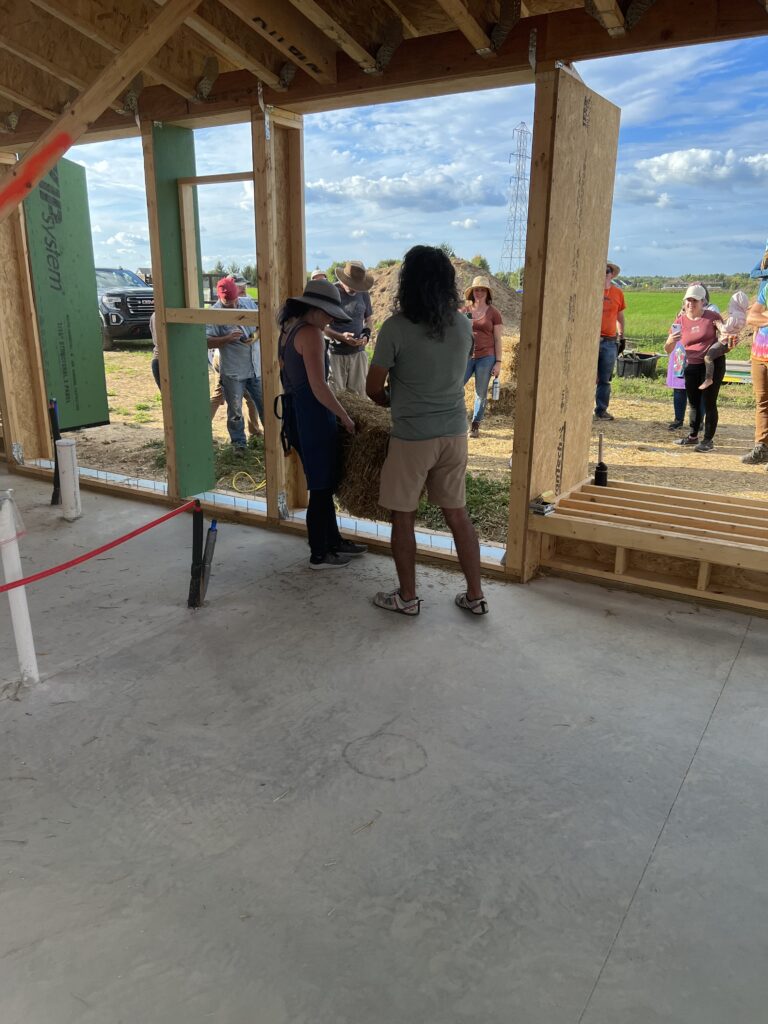I would like to say that straw bale building is the future.
Why so?
Because straw is currently a waste product.
Because when properly constructed with the right techniques, straw bale building is
thermally efficient, durable, eco-friendly.
Because it’s a lot of fun.
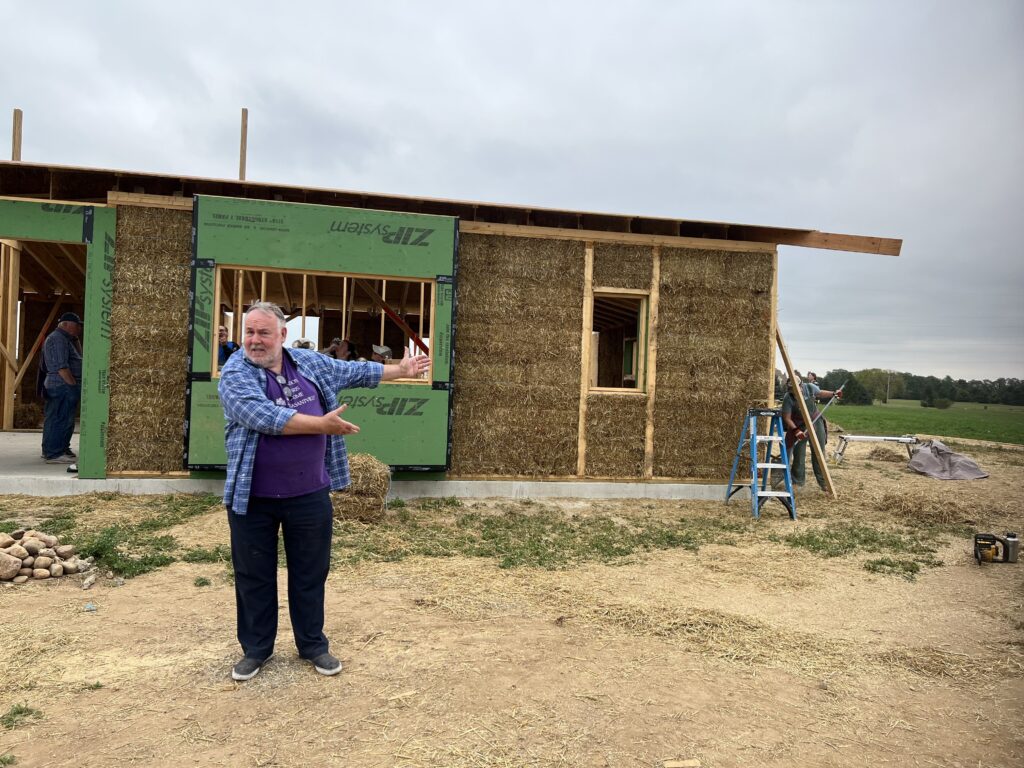
But much as I’d like to say that straw bale building is the future, returning home along i80 through Michigan, Ohio, Pennsylvania and finally New York State, and becoming increasingly aware of the monoculture that flanks an interstate highway, as mall follows gas station, and giant placards advertise what passes for food in our chemically infused culture, possible though straw bale certainly is, at scale it seems unlikely.
A week and a day ago I drove out of Westchester County, New York, crossing the Cuomo bridge and then along i80 West, in company with many trucks. For the first 4 or 5 hours thickly wooded slopes on both sides were all there was, all punctuated by the above-mentioned malls, gas stations and placards. Another 4 or 5 hours and I arrived in Cleveland Ohio for a stop-over at my old friend Haley’s house. She and I braved the Edinburgh Fringe Festival in 1999, and she and her family are recently transplanted from urban Brooklyn.

The next day I drove to lower Michigan and found the building site about 3 miles from the small town of Manchester.

I arrived a day early and set up my tent, having had some practice with a couple of Haley’s helpful elves along the way.
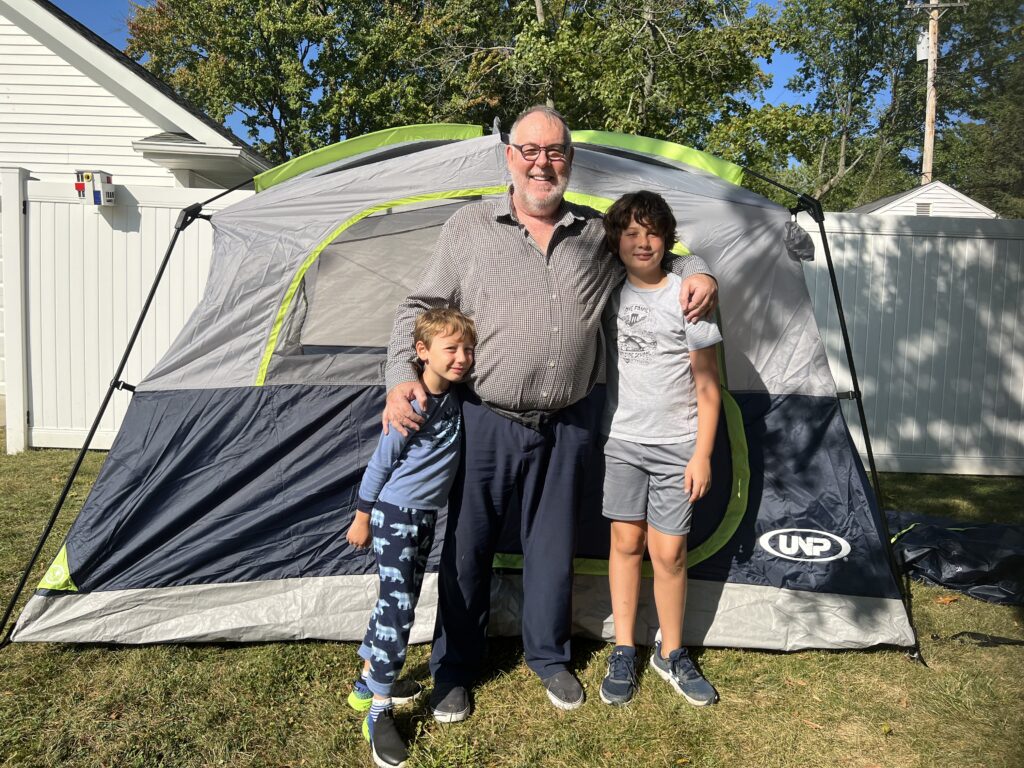
The forty acre site comprised two alfalfa fields over a rolling hill on one side, leading to a small wetlands area and a flat height on the other, divided by an unmade road.

Preparations had been made. Two shipping containers were in place, one holding tools and building supplies, the other stacked with foodstuffs. Generators were powering a mobile kitchen, and there was overhead tenting above trestle tables.
A fire pit was ready to go, and further down the track the house itself, with pristine wooden framing rising from a concrete slab. The gaps between the wooden studs were waiting to be filled with the straw bales which were stacked in a cart and, somewhat concerningly, open to the sky. You’re meant to keep the bales dry at all costs – or so I thought. On either side piles of lumber were neatly arranged.
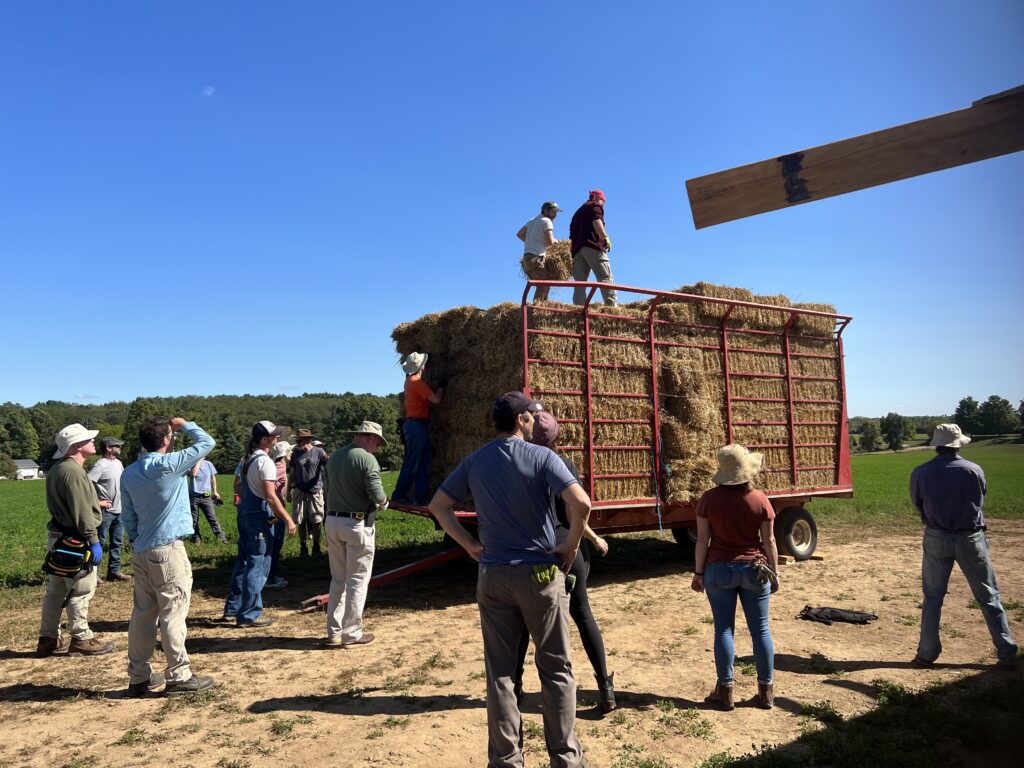
This was reminiscent for me. Many years ago – and for my younger readers I mean way back in the previous millennium in England, I did a similar building workshop. The company then comprised 20 people ranging in type from a muscled eighteen year old bricklayer (male) to an elegant retired seventy-two year old ballet teacher (female), and everything in between. The build was a conventional wooden frame using many 2” x 4” lengths of timber, many 8’ x 4’ sheets of ply, and lots of sheet rock. And I did use these skills when I later built a studio at the bottom of my London garden.
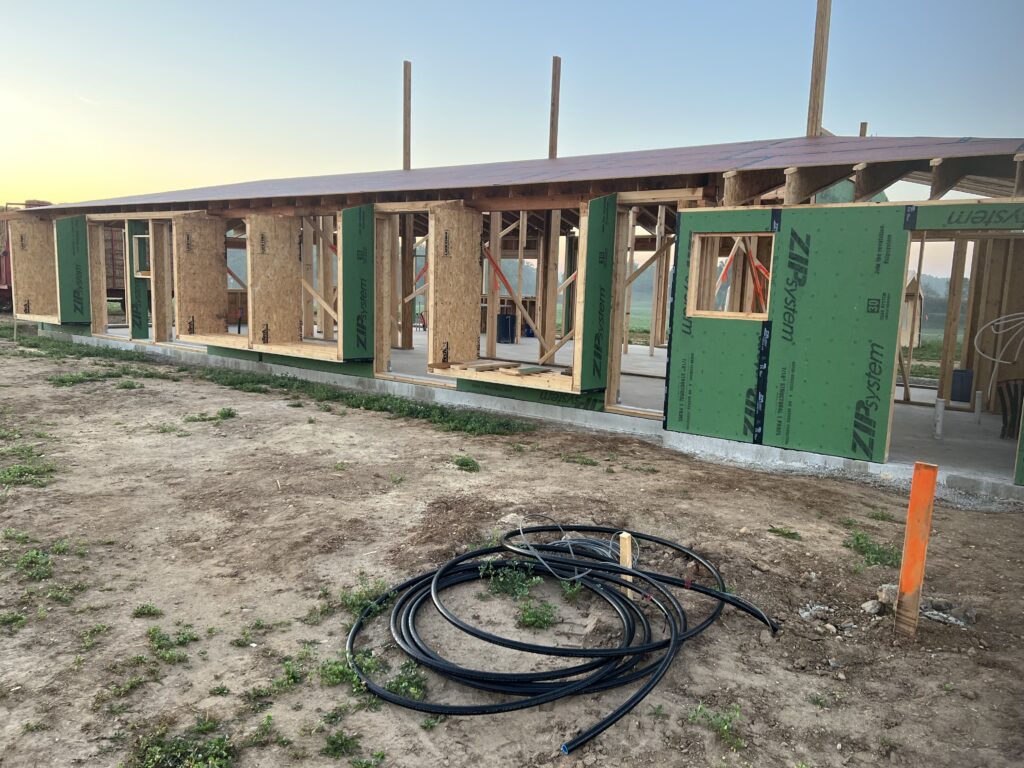
Ah … but that was when the world was young, and I was too.
Don’t get me wrong. In this group seniors were well represented. I met a lady farmer in her seventies, clearly infused with the pioneer work ethic whose constant effort made me mildly embarrassed by comparison, and a married couple of similar age who travel in their mobile home. I was the lone Brit in the group, and there was the odd Tea and/or 1776 joke, as well as a Bill Bryson connoisseur who had spent a year at Durham university, where Bryson was Chancellor from 2006 to 2011.
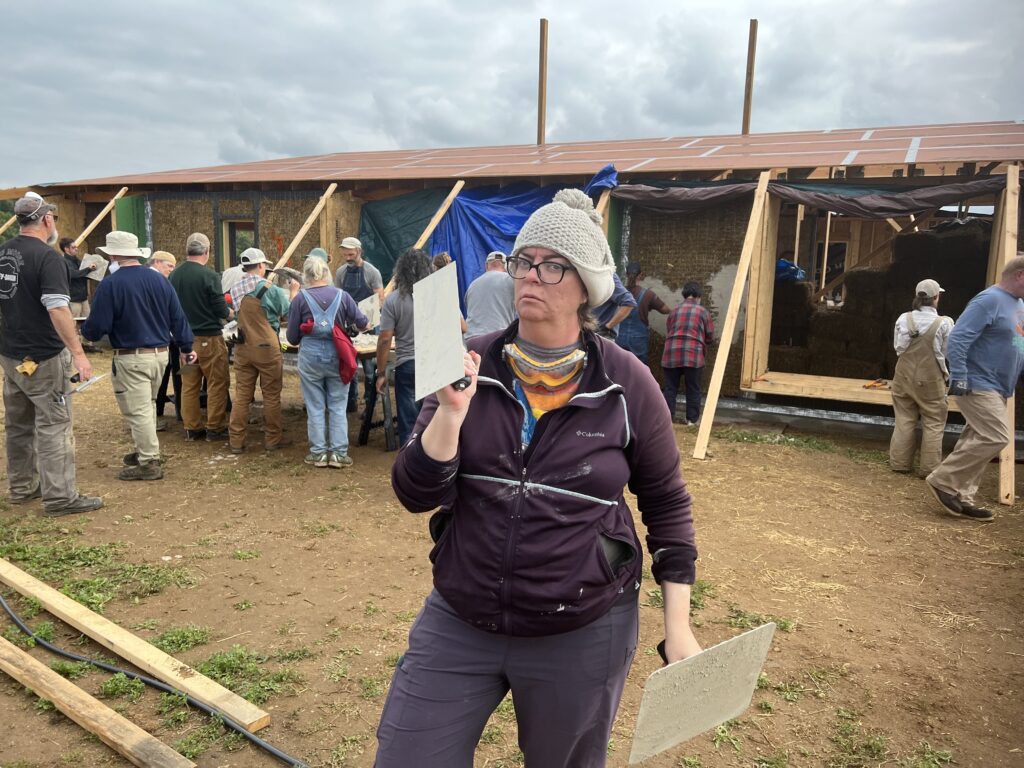
Others in the group – and we were 54 people give or take one or two – were couples of various ages hoping to homestead and build a non-toxic house. You know the kind of thing – the house that does not release chemical gasses, the one made of bio-degradable materials.
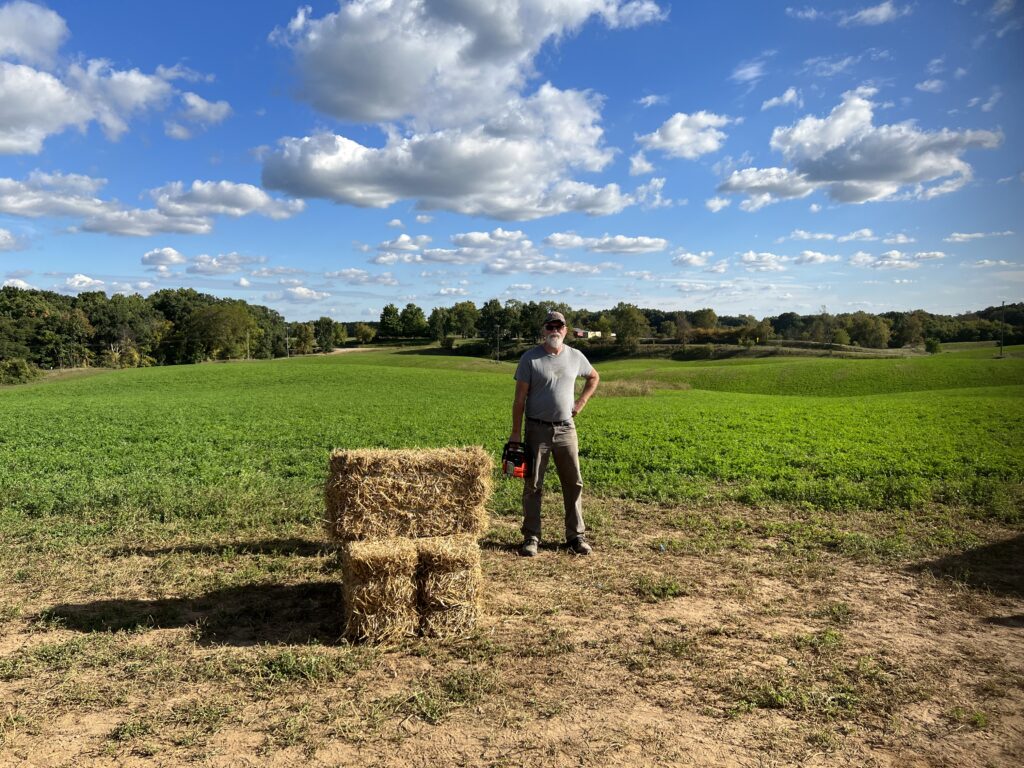
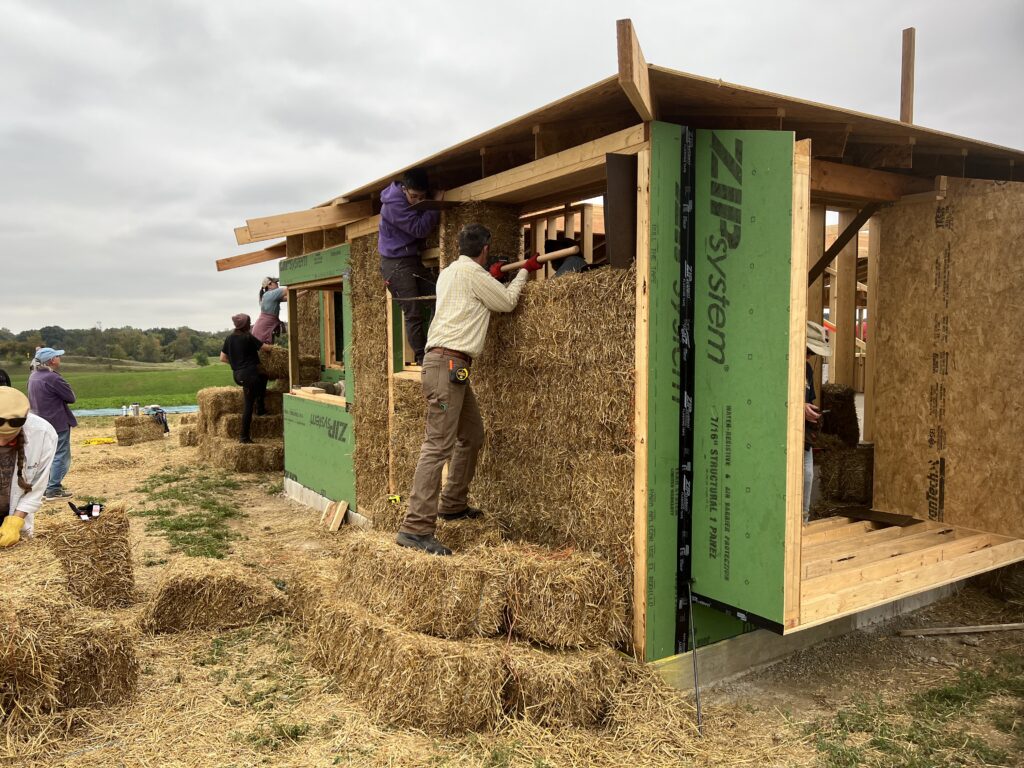
The deal with these eisteddfods is as follows: the owners of the site, the ones who already have a site and want to build a house (in this case using straw), host a week- long workshop which is run by an expert straw-bale enthusiast, a chap called Andrew Morrison. Check the site. It’s easy to find because it’s usefully called strawbale.com. Some time ago I joined his mailing list, and so I knew that this was to be his last workshop (his 98th). So if I wanted the skinny it was now or never. Actually he is handing the brand over to a couple of successors – Timbo who has successfully designed and built straw bale for clients, and Dainella who shares the passion and has a business background.
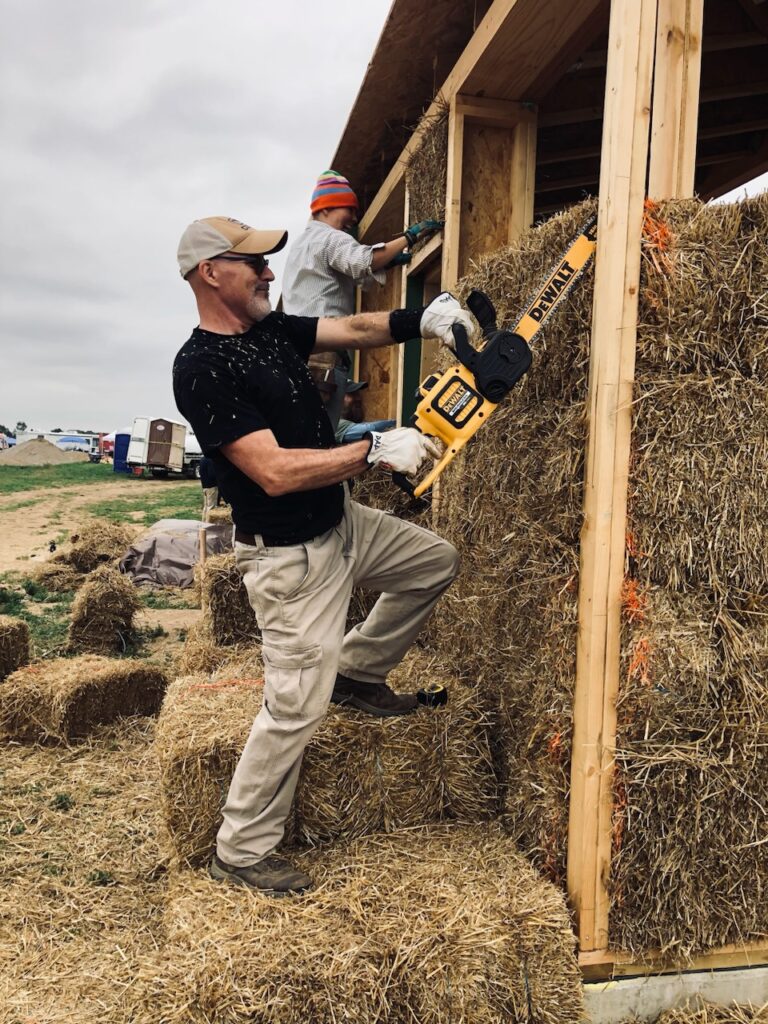
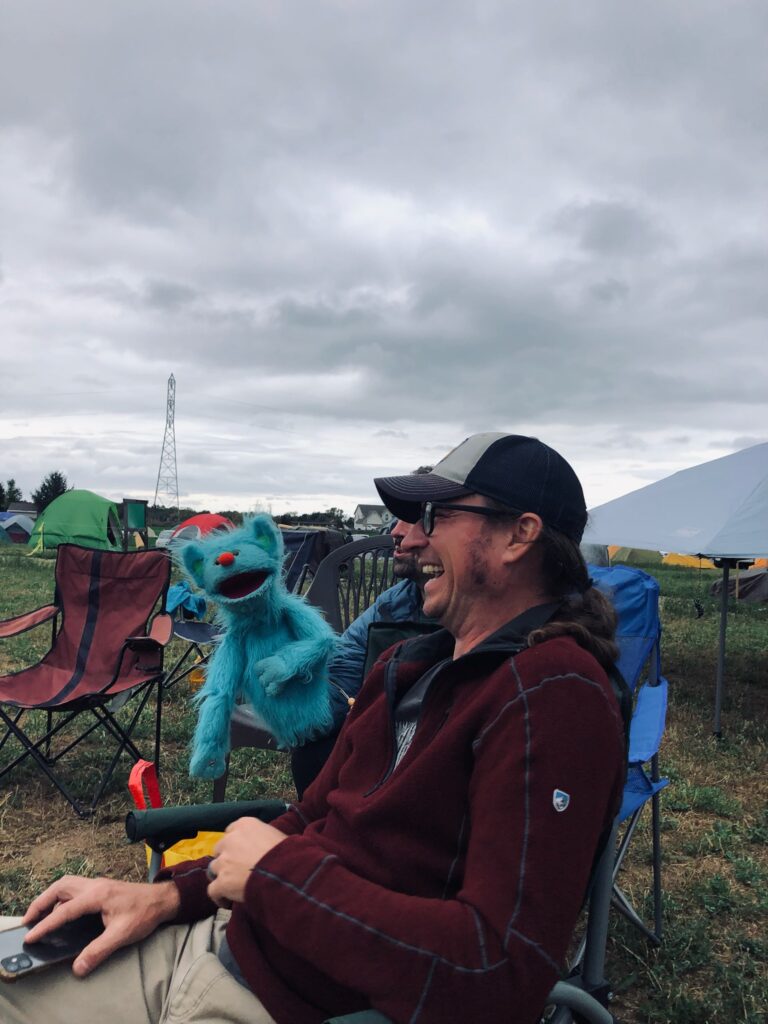
Hosting included supplying the group three meals a day, and some mobile toilet facilities (this last feature needs no description and is best left to the imagination). There were four showers of varying temperament rigged in the field delivering water of varying heat. But the cuisine was impressive and nicely varied – especially so, considering we were in field conditions.
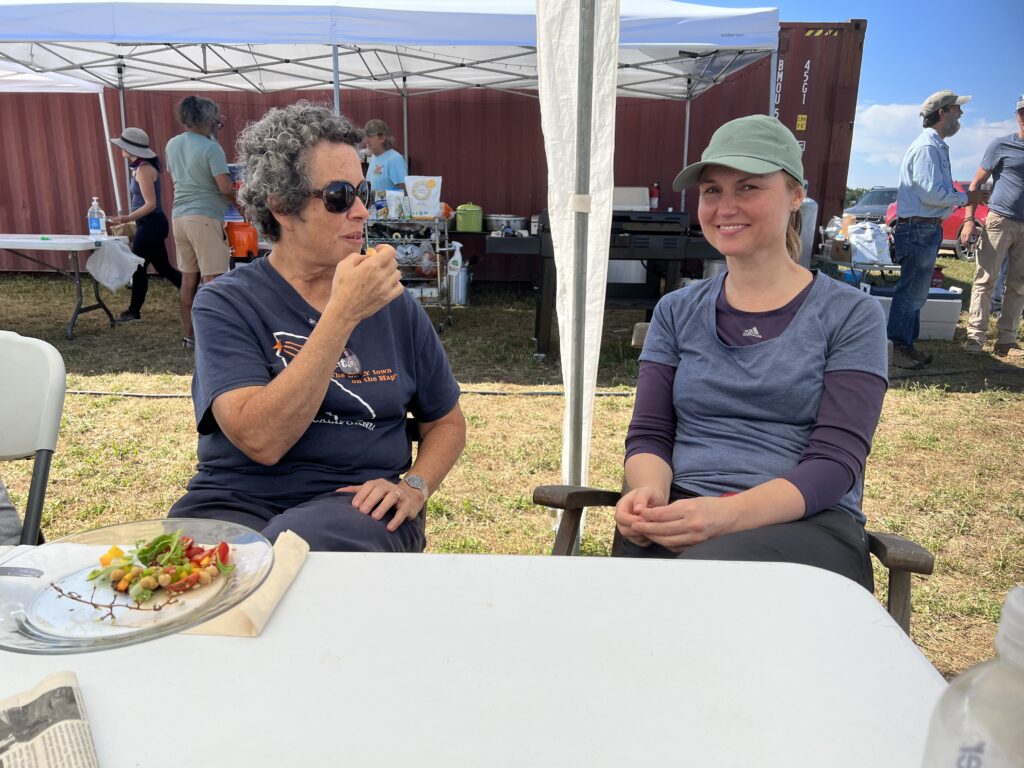

So. Straw ……
Yes, I know the story of the three little pigs.
Here’s how you do it – follow this method and I am assured that you can achieve an R-Value of 40 (as if I knew what that means). You compress the straw by re-tying the bales, and then leaning on them in a move known technically as “bale-humping”.
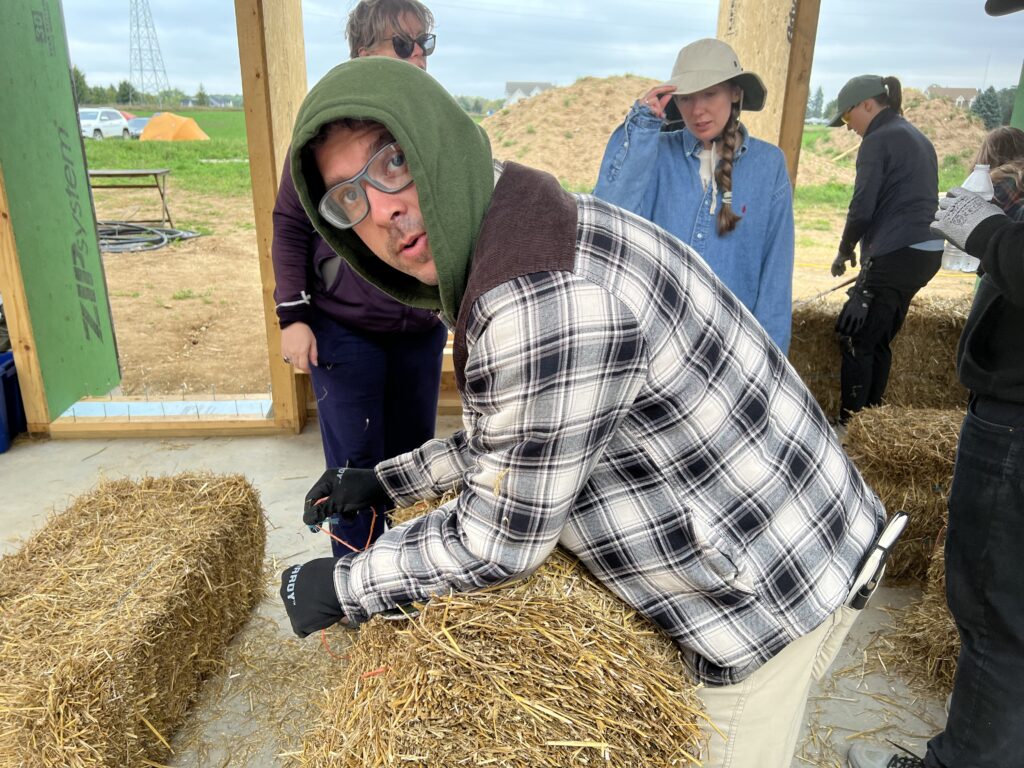
Once cut to size and compressed, the bales are tightly stacked in the wall cavities, and then tamped to achieve maximum possible compression and smoothness.
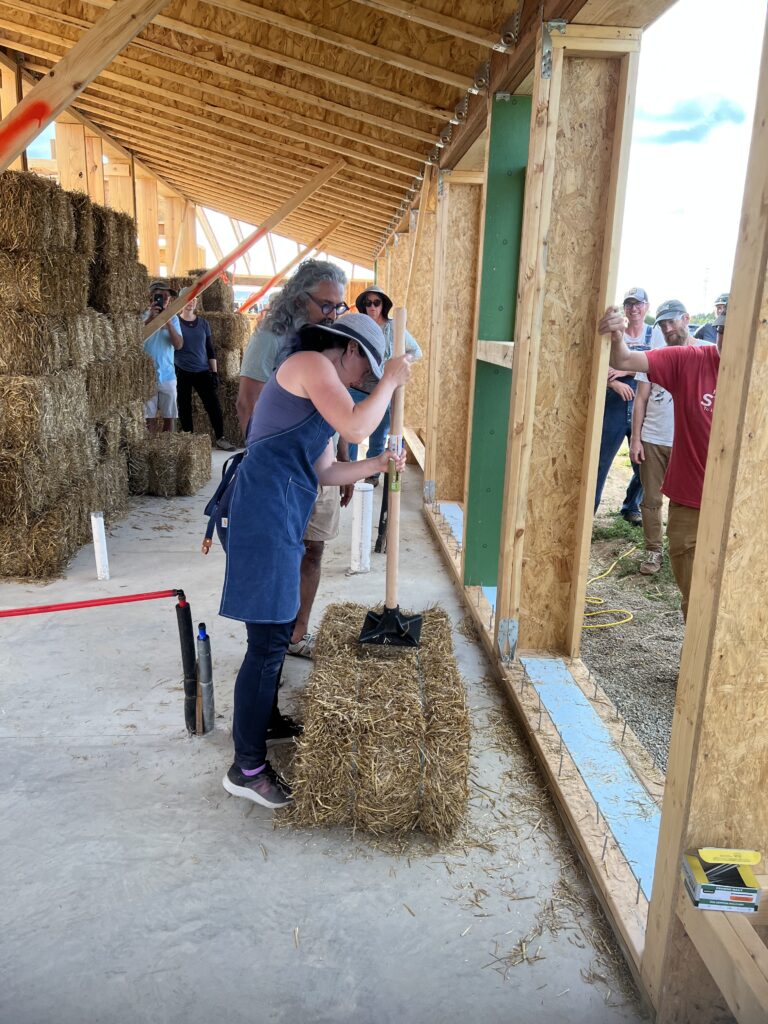
The next stage involves waterproof flashing (as if I knew what that means), and encasing the installed bales with wire netting which is then sewn with a bale-needle and twine from either side. After that treatment the bales become rigid and stable, such that even a squadron of large pigs or wolves on steroids (I forget which) could not make a dent.
But it’s the three coats of plaster – one of clay, two of lime – that are the great secret. Because the plaster, as it cures, actually turns to limestone, which is a substance harder to penetrate than a 1990s politician’s indifference to global warming. At least so I am led to believe.
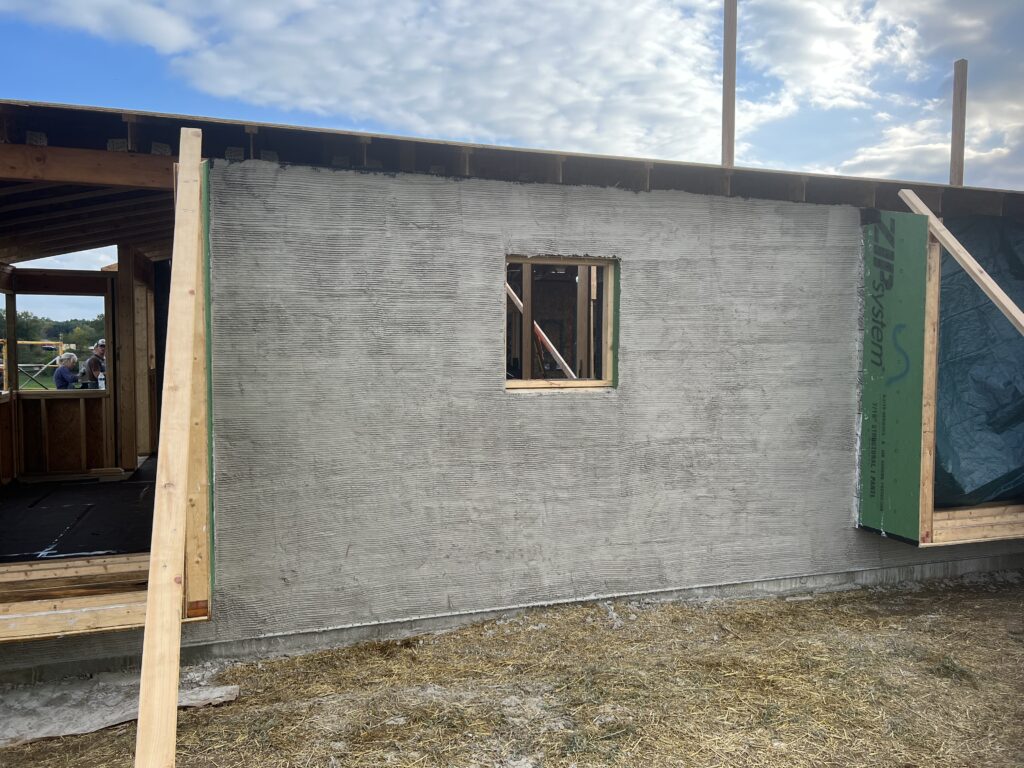
Straw is a waste product. Straw is plentiful. Straw is thermally efficient. And when packed and plastered – fire resistant. Adaptable. Free of toxic chemicals. And although labor-intensive, easy to install.
But… the quality of available bales has declined because Big Ag likes to cut the straw lengths as they are harvested because shorter stalks are easier to dispose of. And.….there is plenty of resistance from the quarters you might expect.
At the moment straw bale building is a niche method and unlikely to become a majority one, but it does have international presence, along with rammed earth, slipstone, log and sod. Interestingly the group on this one reflected, by its diversity of interests, the growing awareness that there might be other and better ways. Permaculture, clean wine, and hydroponics to name a few.
And then…There was that phenomenon that I am used to with theatrical troupes. Which is that by day three you feel as if you’ve been on the gig for weeks, and it’s the only play you’ve ever done, and you’re all one big family with all the well-known family dynamics.
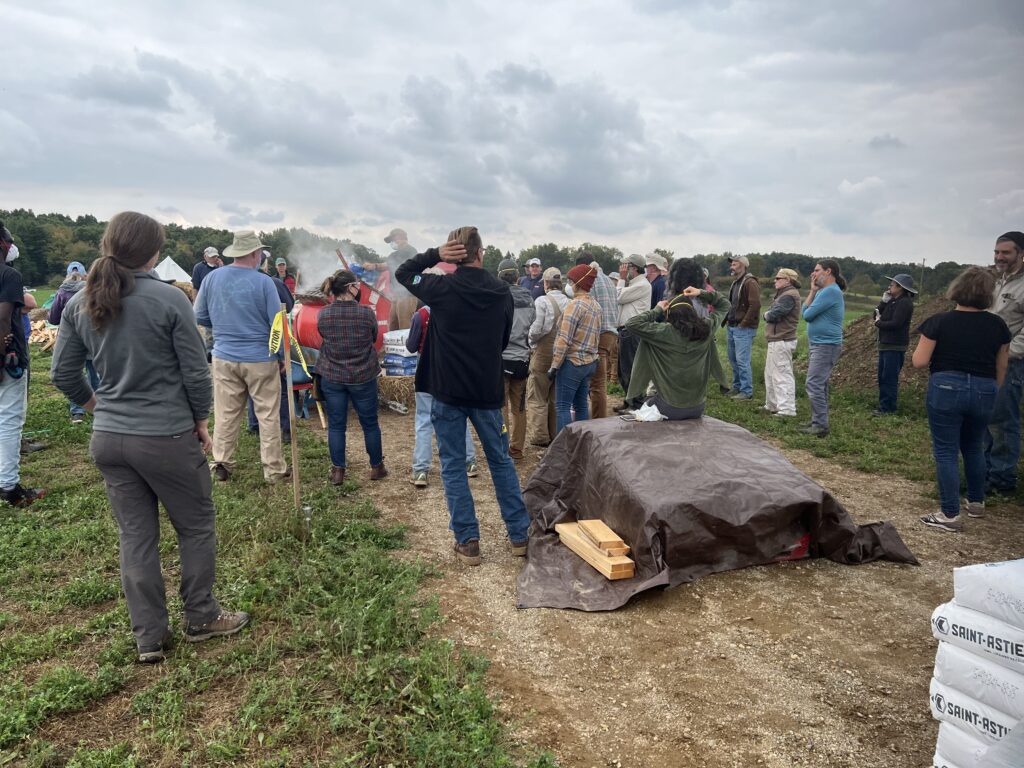
The inclusivity took its tone from the guy leading the workshop – a man always ready with a joke – but with a depth of experience, and knowledge of building in general, and of straw bales in particular. Also a guitar player and singer who gave impromptu concerts around the fire when the day’s work was finished.
The hosts whose house we were building took their duties seriously, supplying generously, including some choice wines and beers.
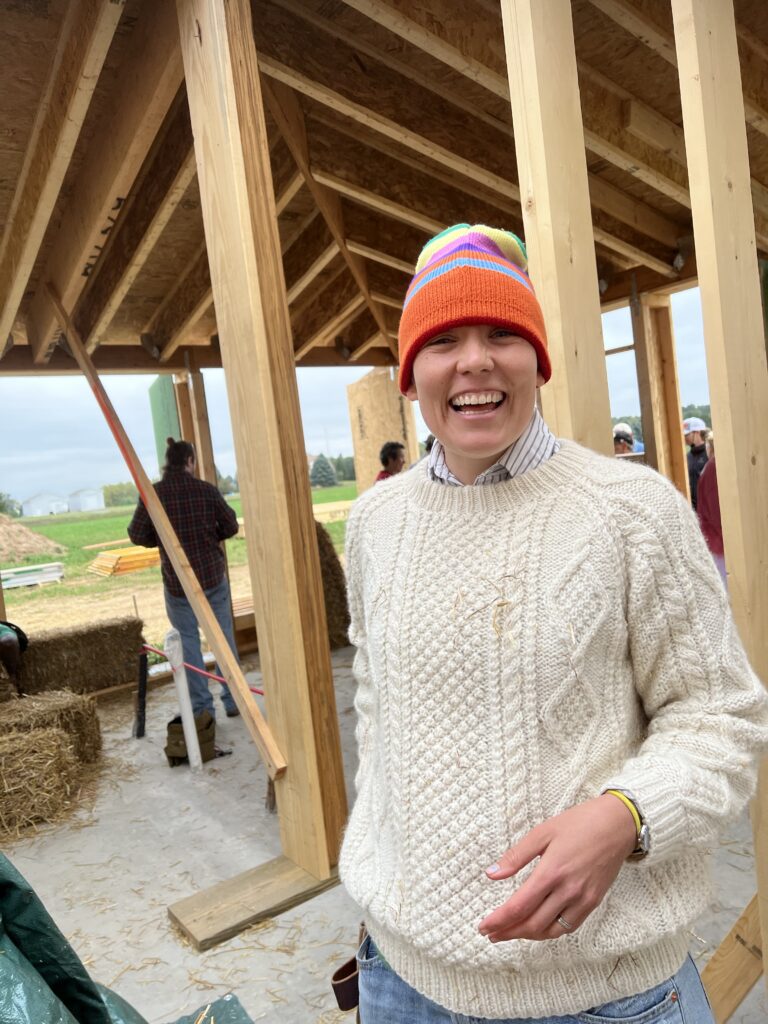
I had answered truthfully when asked what I do, and so it was known that I was an actor. Kyle invited me to give a demonstration. So one evening around the fire pit I recited the fourth chorus speech from Henry V – You know, the one that begins, “Now entertain conjecture of a time when creeping murmur and the poring dark fills the wide vessel of the universe…”
I have to say it was, more or less, ideal conditions in which to do that speech. It was dark, and the flames leaping from the large metal drum that encased them were casting spooky shadows. The gathering had had a chance to mellow after the day’s work and were lubricated with a little hooch, and I reckon I was a novelty item. By which I mean surely you don’t get more than four or five classically trained actors reciting Shakespeare on any given straw-bale build? And if it’s not too immodest to say so, it went well, and the group was generous in its appreciation.
It’s the working together that brings people together. There were some with experience of working on building sites, and some with none, and everything in between. But having to shift many bales of straw more than once and having to share tools, and having to ask more than once, “How do you do that?” eases the distance between people.


Brooms were important. Straw gets everywhere
In the mornings Andrew gave a talk and we proceeded to the next stages – the special knot, the wire mesh, the lath, the ties. But (to my mind and eyes anyway) it was at the scratch coat of plastering that something almost magical happened. We, all fifty plus of us, we became a Unit. We rough plastered the exterior of that sucker, to use the American vernacular, in the shank end of an afternoon. And if it hadn’t been so tough on the shoulders and upper arms I would have said it was as much messy fun as a boy could have and stay legal.
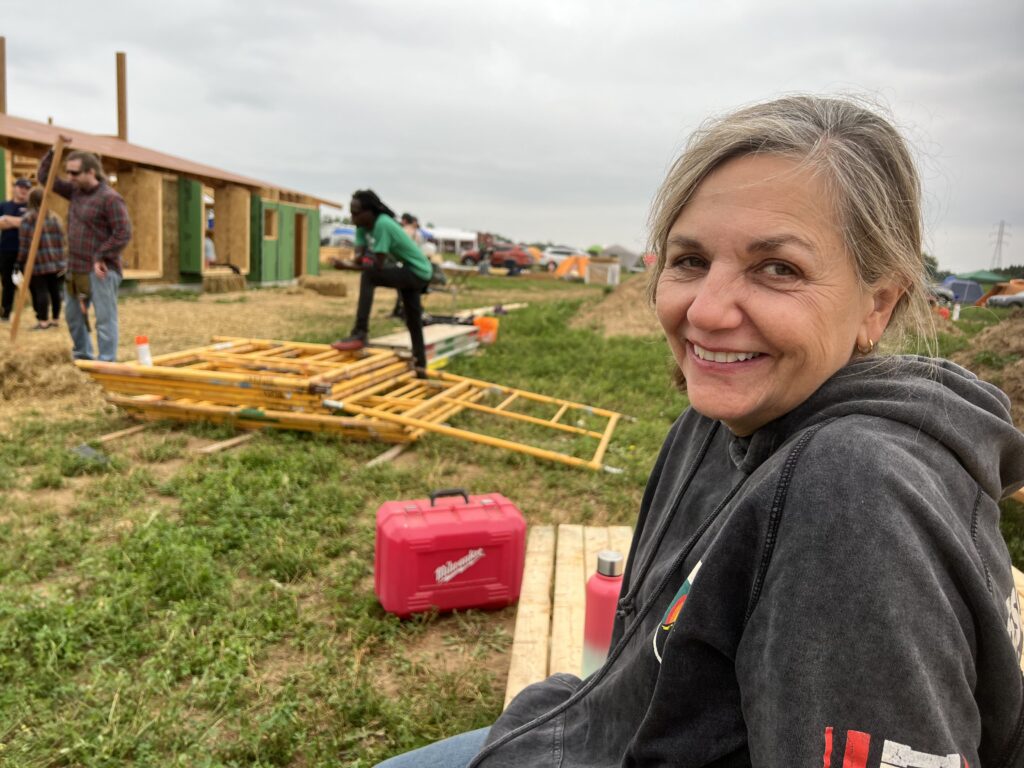
At some point I turned to Bruce, a fellow straw-baler, and said incredulously, “And we paid to do this?”. He agreed that we did, and we remembered that Mark Twain got there first when he had Tom Sawyer charge his friends goods and money to help him paint a fence, “Does a boy get a chance every day to whitewash a fence!” Says Tom, planting desire of the hard-to-attain in his neighbors’ minds. Genius.
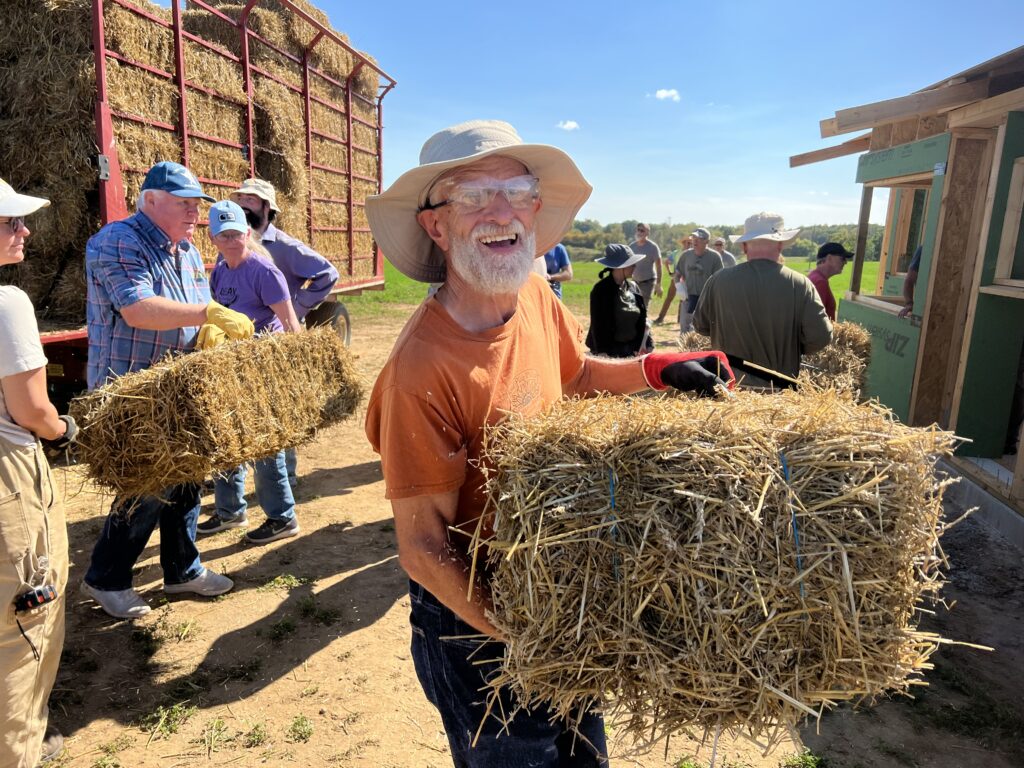
It was a unique experience and a lovely one. To an urban softie like me, the challenge of sleeping under a tent braced by waking in the cold night and having to stumble though alfalfa to pee, was obliterated by the vision on the one night when there was a clear sky, and the vivid stars were secretly commenting on the huge stage where we all live. See Shakespeare, sonnet 15, he puts it better than me.
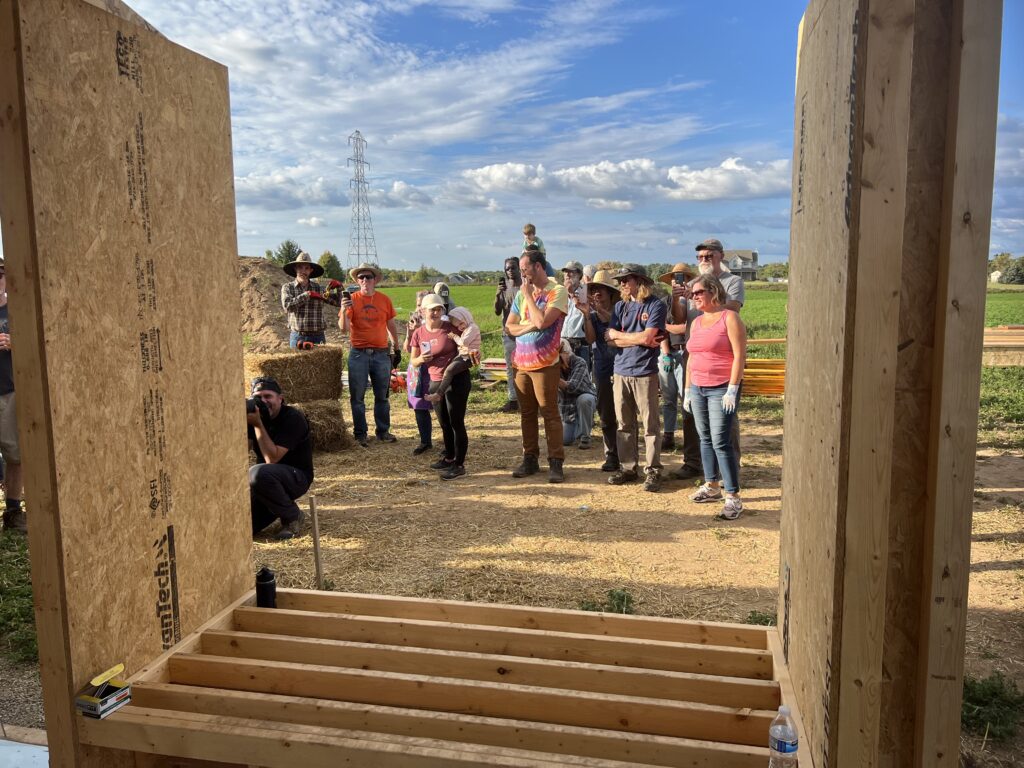
I left on the morning of the final day. A few others had already departed to take up their lives again. I reckoned the remaining majority would finish the interior plastering faster without me. That sense of connection with people you don’t really know very well, but who you can quickly talk to when put together in unfamiliar circumstances, has a poignancy to it. Actors know what I mean. Because you never see that exact combination of people again. You might remain in touch with a few of them or even quite a few, but that exact company doing that exact thing – that doesn’t come again.
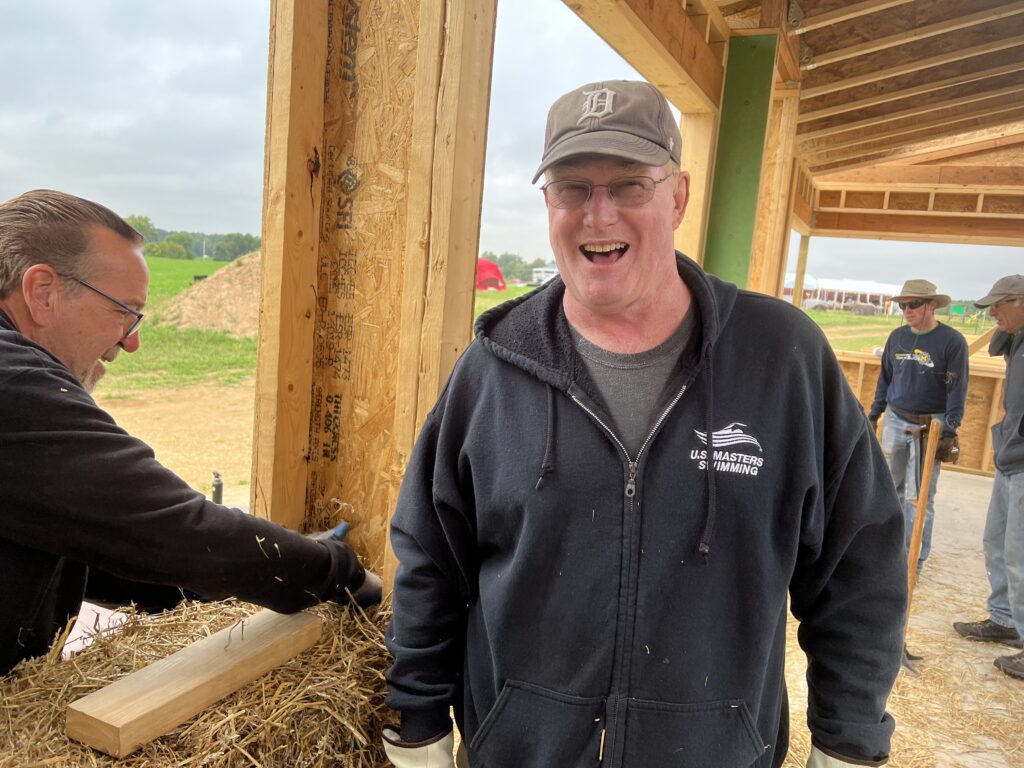
Civilizations rise and fall. As do houses. When this one goes back into the earth one day, it will have done “none harm”.
